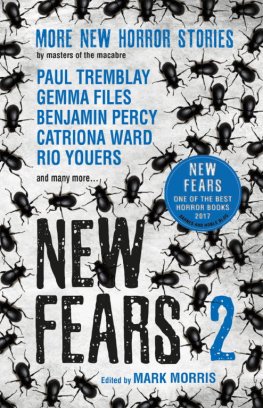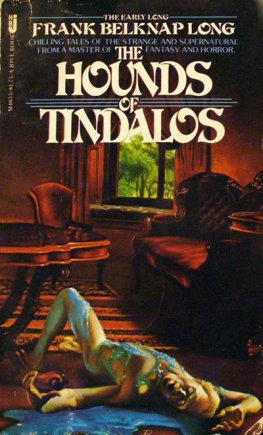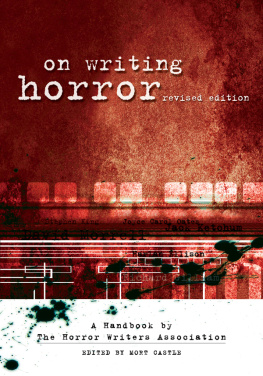THE SATYRS HEAD
tales of terror selected by David A. Sutton
DURING THE EARLY part of the 1970s I had begun editing and producing my fanzine Shadow: Fantasy Literature Review. This was in response to the numerous horror and fantasy fanzines then being devoted to film. And there was a lot happening on the literary side. The Pan Book of Horror Stories was in its middle age. The Ballantine Adult Fantasy Series had emerged in the mid-sixties, reprinting many classic works and later contemporary fantasy writers. Arkham House, having recently published Thirty Years of Arkham House in 1969, was to enter its most productive two decades, with something like seventy-plus titles from both contemporary, classic and "pulp" writers. Many paperback anthologies edited by August Derleth, Peter Haining and numerous others were popping up. The UK paperback publishers were all keen to have a horror genre line, thus Pan, Panther, Four Square, Sphere, Corgi, Fontana, Tandem, and so on all were bringing out horror series or one-off anthologies.
One of the paperback houses, Sphere Books, contacted me after seeing and being impressed with the copies of Shadow FantasyLiterature Review I had sent them. Their editor, Anthony Cheetham, commissioned me to edit a series of annual anthologies called New Writings in Horror & the Supernatural, exclusively to bring out previously unpublished tales of horror by new and well-known genre writers. On the other side of the coin, Sphere hired Richard Davis to edit the Years Best Horror Stories series. Alas, Sphere backed away from New Writings after two volumes. Years Best fared a little better, but was eventually dropped by Sphere. (Luckily it was continued by Daw Books in the USA under editors Gerald W. Page from volume four and Karl Edward Wagner from volume eight). In 1972 I was busy compiling the contents for New Writings volume three when the expected contract failed to materialise
With a batch of stories already to hand, I then contacted Corgi Books, a division of Transworld Publishers, and pitched to them a one-off anthology called The Satyrs Head & Other Tales of Terror. They liked the concept and the book was duly published in 1975 and quickly went out of print. Now, nearly forty years later here is The Satyrs Head: Tales of Terror, a new incarnation for a new generation of horror readers!
David A. SuttonJanuary 2012
THE NIGHTINGALE FLOORS
by James Wade
I
START TALKING ABOUT a broken-down old museum (one of those private collections set up years ago under endowments by some batty rich guy with pack-rat instincts) where strange things are supposed to happen sometimes at night, and people think youre describing the latest Vincent Price horror movie, or the plot of some corny Fu Manchu thriller, the kind that sophisticates these days call "campy" and cultivate for laughs.
But there are such places, dozens altogether I guess, scattered around the country; and you do hear some pretty peculiar reports about some of them once in a while.
The one I knew was on the South Side of Chicago. They tore it down a few years ago during that big urban renewal project around the university got lawyers to find loopholes in the bequest, probably, and scattered the exhibits among similar places that would accept such junk.
Anyway, its gone now, so I dont suppose theres any harm in mentioning the thing that went on at the Ehlers Museum in the middle 1950s. I was there, I experienced it; but how good a witness I am Ill leave up to you. Theres plenty of reason for me to doubt my own senses, as youll see when I get on with the story.
1 dont mean to imply that everything in the Ehlers Museum was junk far from it. There were good pieces in the armour collection, Im told, and a few mummies in fair shape. The Remingtons were focus of an unusual gathering of early Wild West art, though some of them were said to be copies; I suppose even the stacks of quaint old posters had historical value in that particular field. It was because everything was so jammed together, so dusty, so musty, so badly lit and poorly displayed that the overall impression was simply that of some hereditary kleptomaniacs attic.
I learned about the good specimens after I went to work at the museum; but even at the beginning, the place held an odd fascination for me, trashy as it might have appeared to most casual visitors.
I first saw the Ehlers Museum one cloudy fall afternoon when I was wandering the streets of the South Side for lack of something better to do. I was still in my twenties then, had just dropped out of the university (about the fifth college I failed to graduate from) and was starting to think seriously about where to go from there.
You see, I had a problem to be more accurate, I had a Habit. Not a major Habit, but one that had been showing signs lately of getting bigger.
I was one of those guys people call lucky, with enough money in trust funds from overindulgent grandparents to see me through life without too much worry, or so it seemed. My parents lived in a small town in an isolated part of the country, where my father ran the family industry; no matter to this story where or what it was.
I took off from there early to see what war and famine had left of the world. Nobody could stop me, since my money was my own as soon as I was twenty-one. I didnt have the vaguest notion what I wanted to do with myself, and thats probably why I found myself a Korean War veteran in Chicago at twenty-six with a medium-size monkey on my back, picked up at those genteel campus pot parties that were just getting popular then among the more advanced self-proclaimed sophisticates.
Lucky? I was an Horatio Alger story in reverse.
You see, although my habit was modest, my income was modest too, with the inflation of the forties and fifties eating into it. I had just come to the conclusion that I was going to have to get a job of some kind to keep my monkey and me both adequately nourished.
So there I was, walking the South Side slums through pale piles of fallen poplar leaves, and trying to figure out what to do, when I came across the Ehlers Museum, just like Childe Roland blundering upon the Dark Tower. There was a glass-covered signboard outside, the kind you see in front of churches, giving the name of the place and its hours of operation; and someone had stuck a hand-lettered paper notice on the glass that proclaimed, "Night Watchman Wanted. Inquire Within".
I looked up to see what kind of place this museum-in-a-slum might be. Across a mangy, weed-cluttered yard I saw a house that was old and big even older and bigger than the neighbouring grey stone residences that used to be fashionable but now were split up into cramped tenement apartments. The museum was built of dull red brick, two and a half stories topped by a steep, dark shingled roof. Out back stood some sort of addition that looked like it used to be a carriage house, connected to the main building by a covered, tunnel-like walkway at the second storey level, something like a medieval drawbridge. I found out later that I was right in assuming that the place had once been the private mansion of Old Man Ehlers himself, who left his house and money and pack-rat collections in trust to preserve his name and civic Fame when he died, back in the late twenties. The neighborhood must have been fairly ritzy then.
The whole place looked deserted: no lights showed, though the day was dismally grey, and the visible windows were mostly blocked by that fancy art-nouveau stained glass that made Edwardian houses resemble funeral parlors. I stood and watched a while, but nobody went in or out, and I couldnt hear anything except the faint rattle of dry leaves among the branches of the big trees surrounding the place.







![Dzhozef Nassis - SNAFU: Heroes [An Anthology of Military Horror]](/uploads/posts/book/864309/thumbs/dzhozef-nassis-snafu-heroes-an-anthology-of.jpg)









